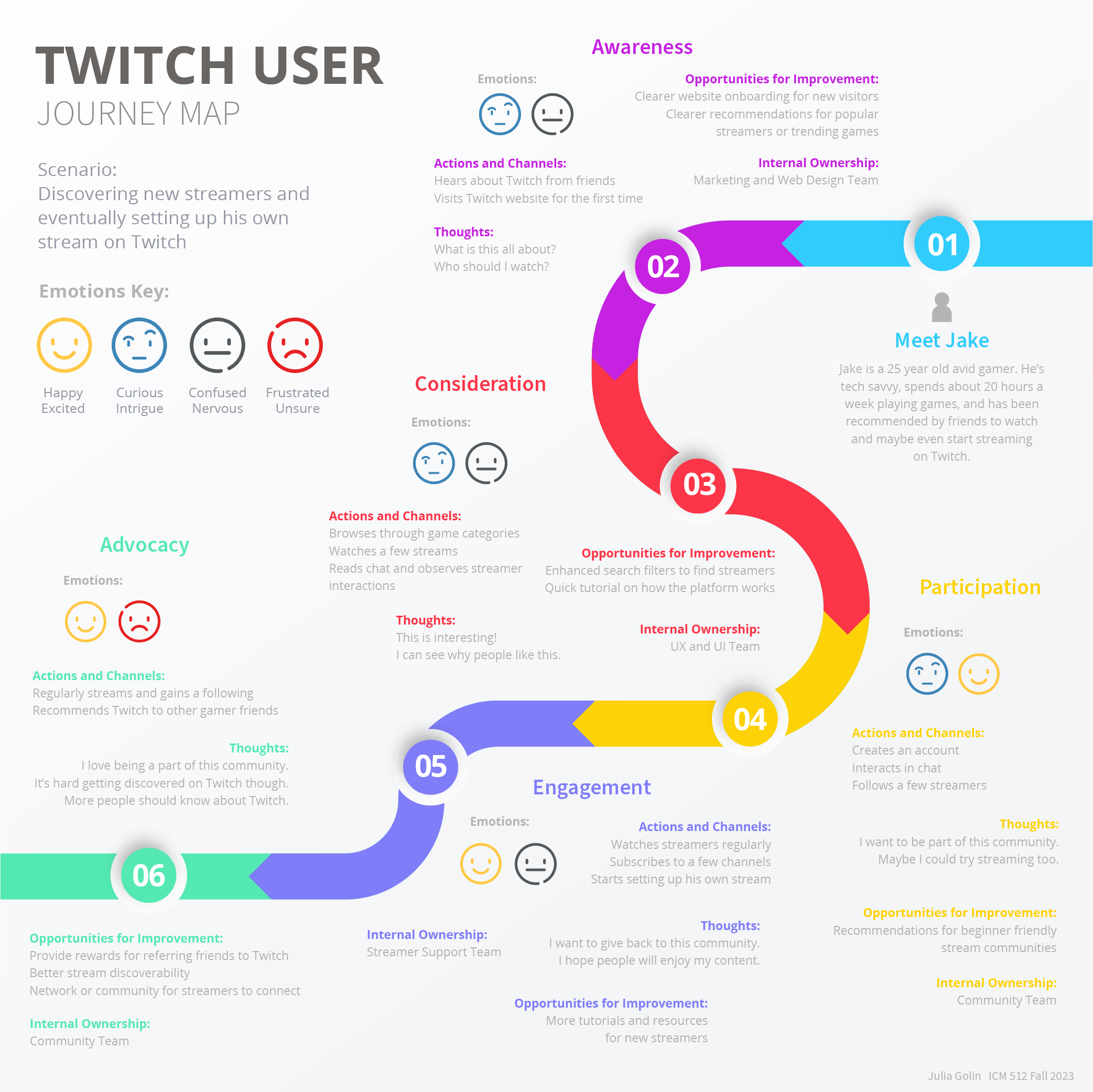Imagine you’re reading a story, where the protagonist encounters various experiences, feelings, and interactions while trying to reach a specific goal. This story, depicted visually, is essentially what a customer journey map is for businesses. It’s a visual representation that captures the entirety of a customer’s experience with a product, service, or band – from the initial awareness all the way through to the point of purchase and beyond.
Why Create a Journey Map?
The power of a journey map lies in its ability to provide businesses with a deep understanding of their customers needs, pain points, and emotions at every stage of their interaction. By visualizing the customer’s journey, businesses can pinpoint areas that may need improvement, find opportunities to delight the customer, and ensure that the overall experience is seamless and memorable. In essence, it allows companies to step into their customer’s shoes and see the world from their perspective.
Researching for a Journey Map
Creating an effective journey map starts with thorough research. This includes gathering data from various sources like customer surveys, feedback, website analytics, interviews, and more. The objective is to capture the complete, authentic experience of the customer, which means understanding not just their actions but also their motivations, challenges, and feelings. It’s essential to be empathetic and open-minded during this research phase to ensure that you’re genuinely listening to your customers.
How to Use Journey Maps
Once created, a journey map becomes a powerful tool for various departments in an organization. Marketing teams can identify potential touchpoints to engage customers, product teams can spot pain points and areas for innovation, while customer service teams can proactively address common concerns. By aligning everyone’s understanding of the customer’s journey, organizations can foster a more customer-centric culture and make informed decisions that enhance the overall experience.
Components of a Journey Map
A well-constructed journey map includes several key components:
- Persona: This represents the typical user or customer. It’s based on data and includes details like demographics, goals, and behaviors. Each journey map is tailored to a specific persona.
- Timeline: This outlines the different stages or phases the persona goes through during their interaction with the product or brand. It could range from initial discovery to becoming a loyal customer.
- Emotion: This is where the map charts the persona’s emotions throughout their journey, helping businesses understand the highs (delightful moments) and lows (pain points).
- Touchpoints: These are the various points where the customer interacts with the business, whether it’s visiting a website, speaking to customer service, or using the product.
- Channels: This defines where the interaction takes place. It could be via a website, mobile app, email, social media, physical store, and so on.
In conclusion, a journey map is an invaluable tool for any business that seeks to understand and enhance the customer experience. By visually charting the customer’s path, emotions, and interactions, businesses can create more personalized and impactful strategies, leading to satisfied customers and lasting relationships.
Journey Mapping Assignment
In an era where online platforms continually evolve to meet user expectations, understanding the user’s journey is crucial. For the last week of my principles of user experience design course, we were tasked with selecting a user goal we were familiar with, like from our comprehensive personas assignment, to create a journey map. My assignment delves deep into the experience of a Twitch user, mapping out each phase of interaction from the first touchpoint to becoming an advocate for the platform. The process behind this journey mapping involved a study of a persona, named Jake, who represents a typical Twitch user demographic. By tracing Jake’s steps, thoughts, and emotions, we aimed to identify potential opportunities and pain points. This method allows for a full view of the user experience, providing insights into where the platform excels and where there might be room for enhancement. Through this journey map, organizations like Twitch can tailor their services, ensuring both new and existing users have a seamless, engaging, and memorable experience. Here is my Twitch User Journey Map for the typical persona, named Jake:

The Twitch User Journey Map serves as a guide into the intricate landscape of user interactions and experiences on the platform. From the stage of awareness to advocacy, the journey of Jake encapsulates the various emotions, thoughts, and touchpoints a typical user might encounter. By dissecting each phase of this journey, we’ve unveiled valuable opportunities for Twitch to further refine its user experience, ensuring that every step feels intuitive, engaging, and rewarding. The insights from this map highlight the importance of continual assessment and adaptation in today’s dynamic digital landscape. By addressing the identified opportunities, Twitch could strengthen its position as a premier streaming platform, fostering deeper connections with its ever-expanding community.
Here is a link to a PDF of my graphic: Twitch User Journey Map